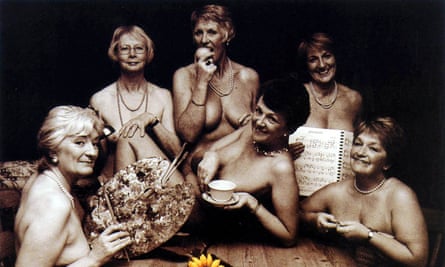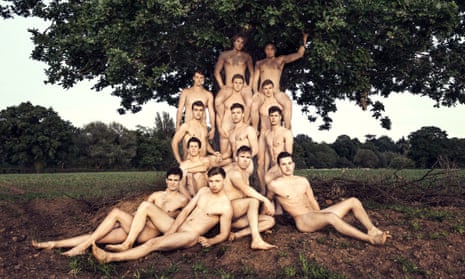Never underestimate the power of people who want to see some taut buttocks. This week, Instagram had to reinstate the account of the Warwick Rowers, members of the University of Warwick boat club, who post nude photographs of its team members to promote its annual naked charity calendar and to use “non-sexualised male nudity to challenge homophobia and patriarchal privilege”.
This is the time of year when companies and organisations start to think about shooting their 2019 naked calendar and the temperature is becoming conducive to getting one’s kit off. The concept has become a phenomenon, ever since the 2000 calendar released in aid of Leukaemia Research by the Rylstone Women’s Institute. Their story didn’t just inspire the film and musical Calendar Girls, but a whole host of people stripping off with only a strategically placed pool cue (the regulars at the Plough Inn, Tetley, who raised £2,100), wheelie bin (Scarborough council’s waste and recycling workers) or well-trimmed bush (the annual Naked Gardeners calendar) to prevent glimpses of anything dangly for a whole month.

There have been naked rugby teams, vet students and gardeners. Some haven’t been altogether successful – the East Grinstead spinners and weavers had to pulp 10,000 copies of their 2005 charity calendar because the number of exposed nipples was deemed too raunchy. In 2004, a charity turned down a £3,000 donation raised by sales of a naked calendar produced by staff at the Royal Hampshire County hospital because the pictures were deemed “not quite suitable”.
Risque images of women have featured on calendars since at least the 1930s, and calendars featuring nudes are commonplace, from the pure objectification of the images you would find in garages and factories, to the supposedly arty, Pirelli-style shots of the limited-edition Pirelli calendar. It was mostly women, but not always – in the 1980s, calendars featuring “real” men, such as firefighters, rather than models (although still adhering to the “beefcake” ideal) took off.

It was the success of the WI calendar, which has raised about £5m since its release in 1999, that subverted the idea of the perfect naked body and got everyone from morris dancers to bus drivers stripping off for charity. Nearly 20 years on, it is no longer surprising or new, and many of the naked calendars are not even subversive, stuffed as they are with a year’s worth of stereotypically hot, young, athletic flesh – although at least these days on a more equal gender split.
Should the naked charity calendar’s days be numbered? Some think so. “More rapidly than most art forms, the nude celebrity calendar has rushed through the cycle from shock-and-outrage to predictable cuteness,” says the cultural and design commentator Stephen Bayley. “Clearly, wince-making hard porn would be inappropriate on a device intended for ticking off the shopping days to Christmas, but the flabby pink gluteus maximus and coy concealments have become a lazy, sub-adult routine.”
